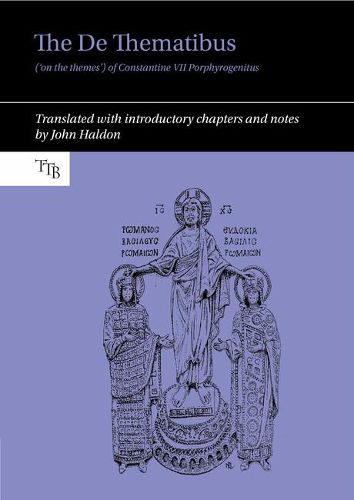Readings Newsletter
Become a Readings Member to make your shopping experience even easier.
Sign in or sign up for free!
You’re not far away from qualifying for FREE standard shipping within Australia
You’ve qualified for FREE standard shipping within Australia
The cart is loading…






The 10th-century treatise on the military provinces (the ‘themes’) of the medieval East Roman (Byzantine) empire is one of the most enigmatic of the works ascribed to the emperor Constantine VII Porphyrogennetos. A mix of historical geography, imperial propaganda, historical information and legend or myth drawn from ancient, Hellenistic as well as Roman and late Roman sources, it was one of the emperor’s earliest works, although the extent to which he was its author remains debated. Its purpose, and the emperor’s aims in commissioning or writing it, are equally unclear, since it offers neither an accurate historical account of the evolution of the themata nor does it appear to draw on available administrative material that would have been available to its writer. It has remained until now untranslated into English and thus inaccessible to many, in particular to students at all levels both within and outside the field of Byzantine Studies, as well as non-specialist readers. This volume is intended to rectify this situation with a translation into English, accompanying detailed notes, and three introductory chapters providing context and background to the history of the text, Byzantine ideas about geography, and the debate over the themata themselves.
$9.00 standard shipping within Australia
FREE standard shipping within Australia for orders over $100.00
Express & International shipping calculated at checkout
The 10th-century treatise on the military provinces (the ‘themes’) of the medieval East Roman (Byzantine) empire is one of the most enigmatic of the works ascribed to the emperor Constantine VII Porphyrogennetos. A mix of historical geography, imperial propaganda, historical information and legend or myth drawn from ancient, Hellenistic as well as Roman and late Roman sources, it was one of the emperor’s earliest works, although the extent to which he was its author remains debated. Its purpose, and the emperor’s aims in commissioning or writing it, are equally unclear, since it offers neither an accurate historical account of the evolution of the themata nor does it appear to draw on available administrative material that would have been available to its writer. It has remained until now untranslated into English and thus inaccessible to many, in particular to students at all levels both within and outside the field of Byzantine Studies, as well as non-specialist readers. This volume is intended to rectify this situation with a translation into English, accompanying detailed notes, and three introductory chapters providing context and background to the history of the text, Byzantine ideas about geography, and the debate over the themata themselves.